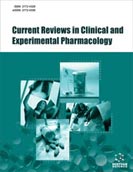Abstract
Background: Psoriasis is one of the most common skin diseases in humans and affects a major population worldwide. The aim of the present study is to evaluate the efficacy of selected polyherbal formulations against psoriasis-induced secondary infections.
Aim: Psoriasis is one of the most common skin diseases in humans and affects a major population worldwide. The aim of the present study is to evaluate the efficacy of selected polyherbal formulations against psoriasis-induced secondary infections.
Methods: Samples were collected from the scalp, behind the ears, chest and back of the patients. The microscopic examination of fungal and bacterial growth was carried out with lactophenol cotton blue stain and gram stain, respectively. Volatile constituents of essential oils were identified by GC-MS analysis, in order to investigate the relation between chemical composition and biological activity. Nutrient agar media was used for antibacterial activity whereas Sabourauds dextrose agar media was used for antifungal activity.
Results: A total of 24 isolates were obtained from 2 patients of scalp psoriasis. Anti-oxidant activity of the samples was determined using DPPH radical scavenging method. In the present study, EOs showed a good antifungal action against Malassezia pachydermatis and other microbial strains. The GC-MS analysis revealed the presence of eugenol, linalool, citral, neral, limonene, terpenes, eucalyptol and thymol in the essential oils. The formulated retention lotion 1 (L4), 2 (L5), 3 (L6) and Cream 1 (C1) showed DPPH radical scavenging activity by 23.52%, 24.48%, 28% and 5.08%, respectively.
Conclusion: The present study concluded that most of the formulated lotions and creams showed good antimicrobial activity and may be applied topically against scalp psoriasis.
Keywords: Malassezia pachydermatis, essential oil, eugenol, Candida spp. scalp psoriasis, amplification.
[http://dx.doi.org/10.18203/issn.2455-4529.IntJResDermatol20192068]
[http://dx.doi.org/10.1046/j.1523-1747.1999.00536.x] [PMID: 10084299]
[http://dx.doi.org/10.1111/1523-1747.ep12480361] [PMID: 2071937]
[http://dx.doi.org/10.1038/ng1096-231] [PMID: 8841203]
[http://dx.doi.org/10.1111/1523-1747.ep12345807] [PMID: 8618016]
[http://dx.doi.org/10.1093/hmg/6.5.813] [PMID: 9158158]
[http://dx.doi.org/10.1111/1523-1747.ep12337469] [PMID: 9326391]
[http://dx.doi.org/10.1086/301899] [PMID: 9634500]
[http://dx.doi.org/10.1046/j.1523-1747.2002.01749.x] [PMID: 11982750]
[http://dx.doi.org/10.1093/hmg/6.8.1349] [PMID: 9259283]
[http://dx.doi.org/10.1093/hmg/6.5.813] [PMID: 9158158]
[http://dx.doi.org/10.1086/377159] [PMID: 12851855]
[PMID: 21475550]
[http://dx.doi.org/10.4049/jimmunol.169.6.2818] [PMID: 12218090]
[http://dx.doi.org/10.1038/ng1268] [PMID: 14608357]
[http://dx.doi.org/10.1016/j.ddmec.2004.11.005]
[http://dx.doi.org/10.1016/j.autrev.2014.11.012] [PMID: 25445403]
[http://dx.doi.org/10.1038/nature05663] [PMID: 17314973]
[http://dx.doi.org/10.1016/j.jaad.2008.02.039] [PMID: 18423260]
[http://dx.doi.org/10.1172/JCI200422147] [PMID: 15199399]
[http://dx.doi.org/10.1016/j.it.2005.10.003] [PMID: 16290228]
[http://dx.doi.org/10.1111/j.1365-2133.2007.08135.x] [PMID: 17714560]
[http://dx.doi.org/10.1016/j.immuni.2011.12.003] [PMID: 22195743]
[http://dx.doi.org/10.1016/j.it.2012.11.005] [PMID: 23291100]
[http://dx.doi.org/10.1007/978-3-319-29785-9_21]
[http://dx.doi.org/10.1046/j.1365-2230.2000.00575.x] [PMID: 10671976]
[http://dx.doi.org/10.1007/s00403-005-0559-7] [PMID: 15856267]
[http://dx.doi.org/10.1016/j.jaad.2005.02.034] [PMID: 15965423]
[PMID: 9188864]
[http://dx.doi.org/10.1038/ng.2007.48] [PMID: 18059266]
[http://dx.doi.org/10.1371/journal.pone.0002719] [PMID: 18648509]
[http://dx.doi.org/10.1128/JCM.00785-06] [PMID: 16891514]
[http://dx.doi.org/10.1111/j.1567-1364.2008.00359.x] [PMID: 18294199]
[http://dx.doi.org/10.1111/bjd.12322] [PMID: 23521130]
[http://dx.doi.org/10.1111/j.1346-8138.2007.00343.x] [PMID: 17727364]
[http://dx.doi.org/10.1111/1346-8138.12739] [PMID: 25510344]
[http://dx.doi.org/10.1111/ijd.12562] [PMID: 25427068]
[http://dx.doi.org/10.1007/s40257-016-0206-4] [PMID: 27435194]
[http://dx.doi.org/10.2174/1871528113666140522104422] [PMID: 24853682]
[PMID: 25053983]
[http://dx.doi.org/10.1016/S0025-7125(03)00073-7] [PMID: 11795092]
[http://dx.doi.org/10.3389/fcimb.2016.00157] [PMID: 27909689]
[http://dx.doi.org/10.1128/CMR.18.1.147-162.2005] [PMID: 15653824]
[http://dx.doi.org/10.20546/ijcmas.2016.502.013]
[http://dx.doi.org/10.1016/j.foodchem.2003.07.024]
[http://dx.doi.org/10.20546/ijcmas.2016.501.064]
[http://dx.doi.org/10.1016/j.indcrop.2012.07.069]
[PMID: 21607192]































